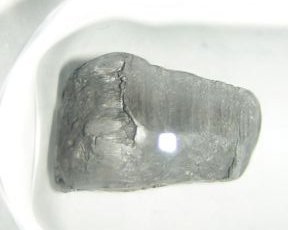Puffins are pelagic seabirds that feed on fish which they catch by diving in the water. They have black and white feathers and a large and colorful beak(shaped more like parrot's beak). Puffin birds are found in three species, out of which two species the tufted puffin and horned puffin are found in the North Pacific Ocean where as the Atlantic puffin is found in the North Atlantic Ocean.
1. Many misinterpret puffin bird with penguins. This could be because they share the same black and white body color. Penguins have black and white skin coat, while puffins have black and white feathers. One more similarity between both penguin and puffin bird is their love for eating fish. But penguins are penguins and puffins are birds. Penguins have wings but can't fly, but puffins are seabirds that fly. They don't even belong to the same family. While penguins belong to the family Spheniscidae, puffin bird belongs to family Alcidae.
2. Puffin birds always breed in large colonies usually on coastal cliffs or offshore islands. They nest in burrows(empty rabbit burrows), or even in rock crevices. They are found in a much larger number and mostly the areas or islands they breed are referred to as Puffin Islands.
3. After the breeding season, puffin birds shed the colorful part of their beak leaving it to look dull and small. Only during the breeding season the puffin birds have a colorful beak.
4. Puffins feed on fishes like herring, capelin, hake etc and also zooplankton. They have this unique ability to hold and carry as many as dozen small fishes at a time crosswise in their bill.
5. Puffins have the ability of swimming underwater as well as fly in the air. Their webbed feet enables them to swim effortlessly underwater, where they catch many fishes at a time.
 |
| Atlantic Puffin |
5 Amazing Facts About Puffin Birds
1. Many misinterpret puffin bird with penguins. This could be because they share the same black and white body color. Penguins have black and white skin coat, while puffins have black and white feathers. One more similarity between both penguin and puffin bird is their love for eating fish. But penguins are penguins and puffins are birds. Penguins have wings but can't fly, but puffins are seabirds that fly. They don't even belong to the same family. While penguins belong to the family Spheniscidae, puffin bird belongs to family Alcidae.
2. Puffin birds always breed in large colonies usually on coastal cliffs or offshore islands. They nest in burrows(empty rabbit burrows), or even in rock crevices. They are found in a much larger number and mostly the areas or islands they breed are referred to as Puffin Islands.
 |
| Tufted Puffin |
3. After the breeding season, puffin birds shed the colorful part of their beak leaving it to look dull and small. Only during the breeding season the puffin birds have a colorful beak.
4. Puffins feed on fishes like herring, capelin, hake etc and also zooplankton. They have this unique ability to hold and carry as many as dozen small fishes at a time crosswise in their bill.
5. Puffins have the ability of swimming underwater as well as fly in the air. Their webbed feet enables them to swim effortlessly underwater, where they catch many fishes at a time.














